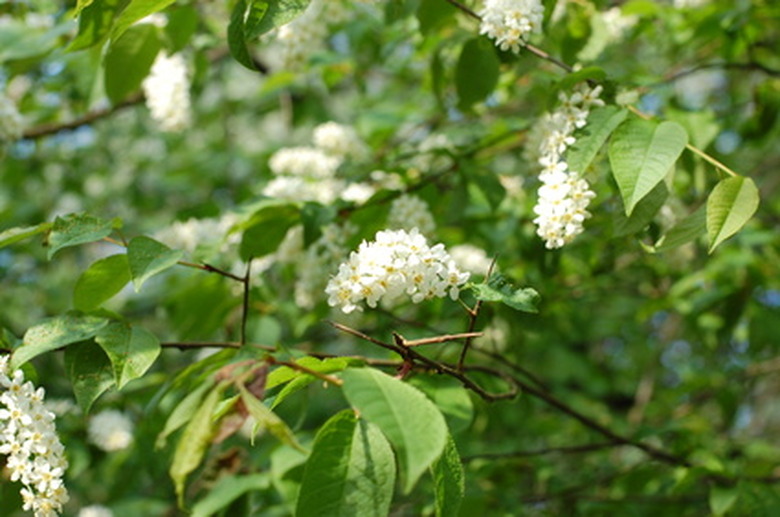Wild Cherry Tree Information
The wild cherry tree (Prunus serotina), also known as the black cherry, grows to a height of 60 feet; rarely, it can grow to 100 feet. Tiny, elongated white flower clusters that measure 6 inches in length form each spring and hang from the tree, producing a pleasing fragrance. Following flowering, tiny reddish-black berries appear. Birds adore the berries, but humans often feel they are bitter even when ripe.
Range
Black cherry trees occur along the East coast of the U.S. In the Allegheny Plateau of Pennsylvania, New York and West Virginia, the tree is harvested commercially. The tree's naturally occurring range is from Canada to Florida and as far west as Texas, according to the U.S. Forest Service. The tree also occurs in Central Mexico and Guatemala. A few trees have been found in New Mexico and Arizona.
- The wild cherry tree (Prunus serotina), also known as the black cherry, grows to a height of 60 feet; rarely, it can grow to 100 feet.
- Black cherry trees occur along the East coast of the U.S.
- In the Allegheny Plateau of Pennsylvania, New York and West Virginia, the tree is harvested commercially.
Propagation
Birds consume the black cherry tree's fruit and then disperse the seeds when they eliminate. Seeds require a cold stratification of at least three to four months. Propagation is also attainable through soft wood cuttings.
Light Requirements
The black cherry tree cannot tolerate shady conditions. The tree requires full sunlight to grow. Newly developed seedlings can withstand dappled shade beside their parent tree, but if full sunlight is not attained by the time the seedling reaches 5 years of age, it will quickly die.
Root Growth
Wild cherry trees develop a shallow, spreading root growth. Most roots occur only 24 inches beneath the soils surface. The shallow root system makes the tree extremely susceptible to being blown over in heavy winds. In moist soil locations the roots often grow in even more shallow conditions, because the tree's root system does not have to delve deeper underground to find water during times of drought.
- Birds consume the black cherry tree's fruit and then disperse the seeds when they eliminate.
- Newly developed seedlings can withstand dappled shade beside their parent tree, but if full sunlight is not attained by the time the seedling reaches 5 years of age, it will quickly die.
Landscape Specimen
Often considered too messy as a landscape specimen due to its abundant fruit crop, the black cherry tree is more suited to a woodland setting. The tree should not be planted near livestock or horses due to the cyanide compounds found in the twigs and leaves, which can prove toxic when consumed as a forage, according to Floridata.
